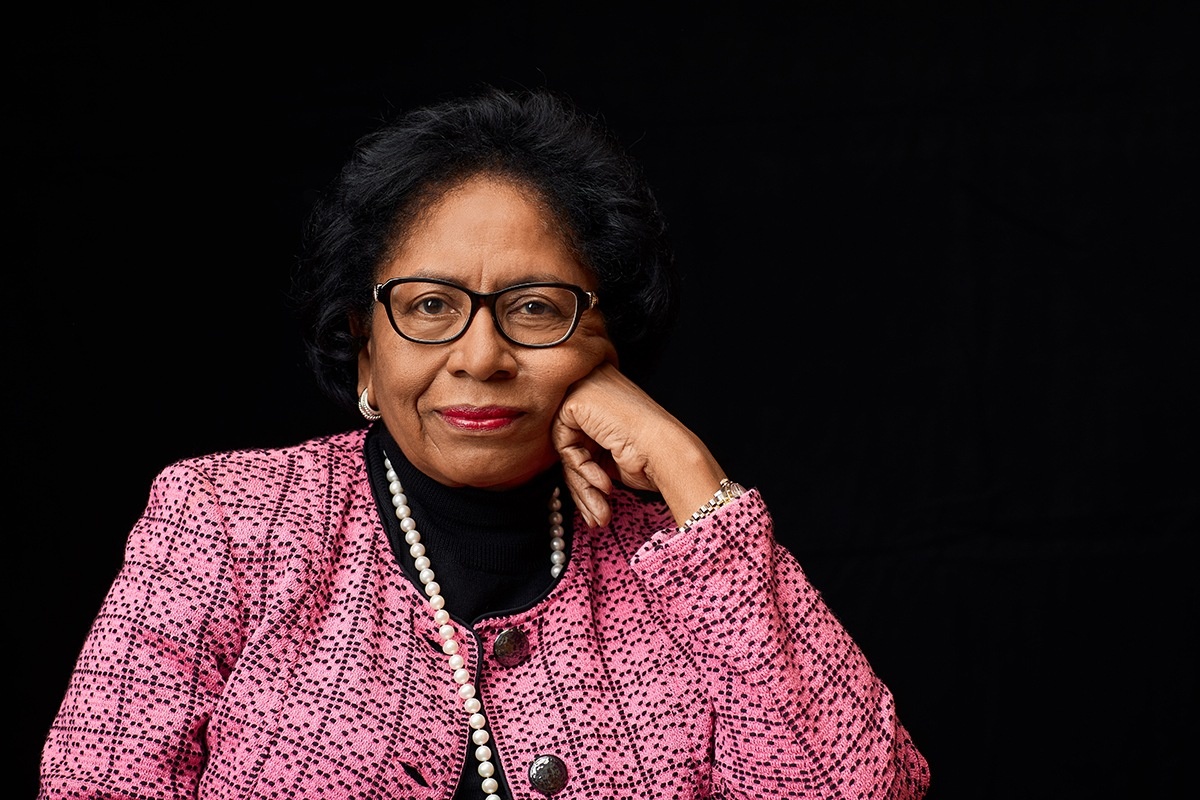The red dirt roads of the Pineywoods started Ruth Simmons on a journey that would lead to leadership roles in academia. After decades away, including time among the cobblestone streets of scholarly New England, she’s back in East Texas and cultivating minds once again.
Simmons gained worldwide attention first as president of Smith College in Massachusetts, then as president of Brown University, where she was that 250-year-old institution’s first woman leader and the first black president of an Ivy League institution.
Simmons was born Ruth Stubblefield in the Houston County community of Grapeland. Her family left rural East Texas for Houston when she was 7, but her ties to Grapeland have threaded through her life. In 2012, she honored her mother by establishing the Fannie Campbell Stubblefield Room for Genealogy in the Grapeland Public Library.
Her large family had worked as tenant farmers when tenant farming was the last vestige of the plantation system. Black families paid one-third of their corn and cotton crop as rent on the land west of Grapeland on the Trinity River. Many families survived under this arrangement, but once machines took over the cotton picking and planting, sharecropping faded.
At that point, Simmons’ older brothers moved to Houston for factory jobs. Once they were established, they called for the rest of the family to join them in Houston’s Fifth Ward.
As a child, Simmons’ primary interest was books. “I was a bit of a loner anyway,” she says. “What I liked to do, most children my age did not like. I was a compulsive reader.”
She succeeded early. “Teachers singled me out and started to help me. It didn’t matter that I was poor and didn’t have clothes. I was smart and people were impressed with that.”
Neither of her parents had graduated from high school, but they taught their children how to make their way in the world. “In the old days, when we would gather crops from the field, my mother would sit on the porch and shell peas,” Simmons says. “And she talked about life.”
After the move to Houston, other older brothers became standout basketball players for Houston’s Wheatley High School. Her brother Clarence was also her introduction to college as he received a basketball scholarship and became the first in the family to go to university.
His college of choice: Prairie View A&M University.
Simmons took another direction: She received a scholarship to Dillard University, a historically black college in Louisiana, before earning advanced degrees from Harvard University.
She held leadership positions at the University of Southern California and Spelman College in Atlanta before becoming president at Smith College then Brown. When she retired from Brown in 2012, she settled back in Houston, thinking she would serve on boards and do some consulting.
But her brother encouraged her to do something at Prairie View A&M, a historically black college of more than 9,000 students in San Bernard Electric Cooperative’s service territory. When he saw her serving on boards for Rice University and working with the University of Houston, he asked, “When are you going to do something with Prairie View?”
The opportunity came when George Wright, who served as president of Prairie View A&M for 14 years, announced in 2017 that he was stepping down as soon as an interim president could be named. University leadership asked Simmons to fill in, and in July 2017, she started the job.
Simmons immediately focused on enhancing areas that would pave the way for the next president. Then, in October, Texas A&M University System Chancellor John Sharp announced Simmons as the sole finalist for permanent president of Prairie View A&M, ending her brief retirement.
Historically black colleges shaped her life trajectory, and in her final professional role, she finds herself helping students at an institution like the one that launched her university career.
“I am very much aware of how important Prairie View has been over the years as an institution and the many outstanding people who graduated from the university,” Simmons says. “Recognizing the importance of the university, I thought, ‘If I can do anything, I should.’”
Her mother’s front porch lessons were resonating again.
Houston-based LaDawn Fletcher writes about Texas culture and travel.


